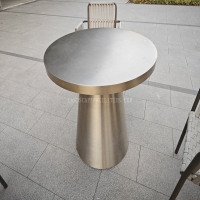Welcome to the website for landscape facilities products and knowledge.
How does the company address potential obsolescence of the product?
In today's rapidly evolving technological landscape, companies face the constant challenge of product obsolescence. Forward-thinking organizations implement comprehensive strategies to ensure their products remain relevant and valuable over time. One primary approach involves designing modular architectures that allow for component upgrades rather than complete replacements. This modular design philosophy enables customers to enhance specific features without discarding entire systems, significantly extending product lifecycles.
Many technology companies now employ regular software update cycles and firmware improvements to maintain product functionality. These updates often introduce new capabilities that keep pace with evolving market demands and technological standards. Additionally, companies establish technology roadmaps that anticipate future developments, allowing them to phase in changes gradually rather than reacting to disruptive innovations.
Another crucial strategy involves creating backward compatibility systems that ensure new products can interface with older versions. This approach preserves customer investments while enabling gradual migration to updated platforms. Companies also implement lifecycle management programs that include trade-in options, recycling initiatives, and upgrade paths to minimize waste and maximize value retention.
Sustainable design principles play an increasingly important role in combating obsolescence. By using durable materials, standardized components, and repairable designs, companies reduce the environmental impact of their products while enhancing longevity. Many organizations now publish transparency reports detailing their product lifespan expectations and support timelines, building trust through clear communication.
The most successful companies view obsolescence management as an ongoing process rather than a one-time solution. They maintain active feedback loops with customers to understand evolving needs and incorporate this intelligence into product development cycles. This customer-centric approach ensures that products evolve in directions that provide genuine, lasting value rather than simply chasing technological trends.
Ultimately, addressing product obsolescence requires balancing innovation with sustainability, customer needs with technological possibilities, and short-term market demands with long-term value creation. Companies that master this balance not only reduce waste and environmental impact but also build stronger, more loyal customer relationships based on trust and demonstrated commitment to lasting quality.
Related search:

Recommendation
Outdoor Metal Table - Classic Outdoor Furniture, Stainless Steel Table, Durable and Reliable